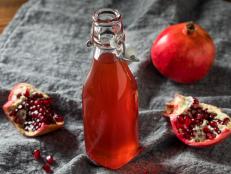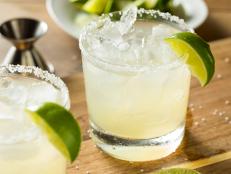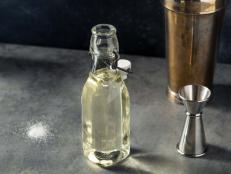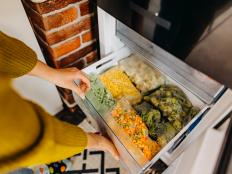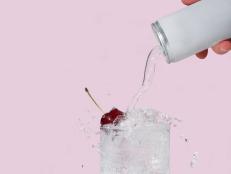How to Make Clear Ice at Home
Pst, you’ll want to snag this specialty clear ice cube tray.
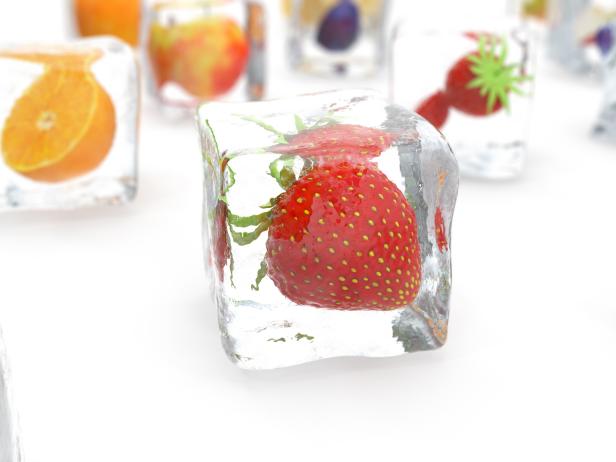
Rost-9D/Getty Images
By Layla Khoury-Hanold for Food Network Kitchen
Layla Khoury-Hanold is a contributor at Food Network.
Maybe you’ve heard mixologists geeking out over ice behind the bar. Or maybe you’ve noticed that bars sometimes list the type of ice in a drink. Ice, and more specifically, clear ice, is an essential ingredient in a high-quality craft cocktail. To help explain why clear ice matters and offer tips on making clear ice cubes at home, we consulted Becky Hammond, Director of Beverage at STIR, a popular cocktail bar in Raleigh, North Carolinla. Using a proprietary machine, STIR produces two 300-pound blocks of ice every two to three days, which an “ice chef” then cuts to create seven different styles of ice.
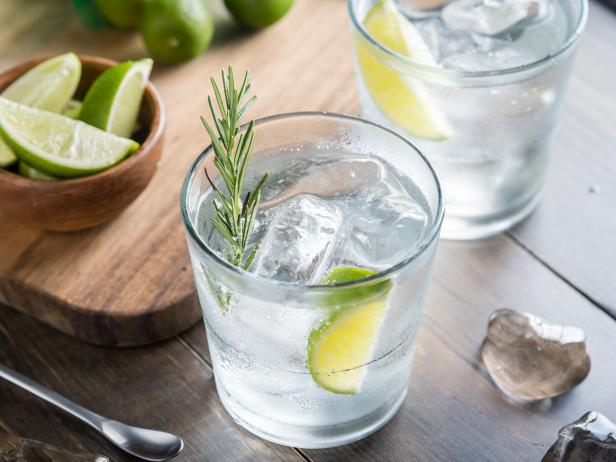
ahirao_photo/Getty Images
Why Is Clear Ice so Important for Cocktails?
Hammond explains that different types of ice melt at different rates. In cocktail-making, this means the variety of ice affects the cocktail’s rate of dilution as well as its consistency, which allows the other ingredients to be tasted at their fullest. Here’s where clear ice comes into play. Yes, it’s visually striking. Yes, it signals time, craftmanship and value because it’s difficult to create. But it also melts more slowly than cloudy ice because it’s denser – it contains fewer air bubbles. The bartenders at STIR match the style of cocktail or spirit with the type of ice cube that will offer the correct rate of dilution. Take note. Large clear rocks are king for chilling but not over diluting cocktails like old fashioned’s, which are sipped slowly. Smaller clear rocks are ideal for quick sippers like palomas. And sphere-shaped clear ice is perfect for keeping every sip of whiskey the same temperature and flavor.
Can You Make Clear Ice at Home?
There are many, many tips and tricks for achieving clear ice. Most of them involve starting with the right type of water. We tested all the methods to find the ones that work – so you don’t have to. We froze tap water, hot boiled distilled water, warm boiled distilled water and room temperature distilled water in regular ice cube trays over the course of 24 hours. We found that making ice with hot boiled distilled water provided the clearest results, but the ice cubes were still not crystal-clear. Going through all that work only to achieve not-quite clear ice cubes did not seem worth it.
We changed tactics and – bingo – finally succeeded. We were able to achieve crystal clear ice cubes using a specialized ice cube tray that allows for directional freezing.
What Is Directional Freezing?
Directional freezing is the process of forcing water to freeze in a singular direction. As Hammond explains, in a regular ice cube tray, water can freeze in any direction and the impurities will be scattered through the ice. If the water is frozen in a singular direction, the impurities and air will all be forced out in the same direction, leaving the ice clear except for a small section.
Many bartenders and at-home enthusiasts employ directional freezing in a technique that involves making ice inside of a cooler inside of a freezer, then sawing the large block into smaller pieces with a serrated knife or chiseling it with an ice pick. While the method works, you need to have a lot of freezer space and patience. We prefer investing in an inexpensive special clear ice cube tray and then following the steps below.
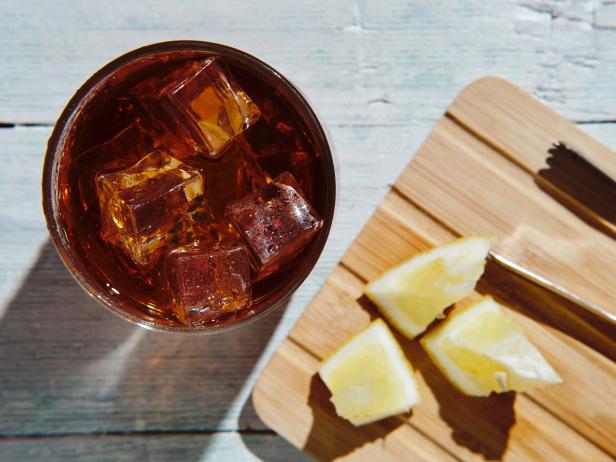
Cavan Images/Getty Images
How to Make Clear Ice with a Clear Ice Mold
Most clear ice molds come in two pieces: a bottom tray and the ice cube molds.
Step 1: Fill the Bottom Tray
Fill the bottom tray with a couple inches of water.
Step 2: Insert the Ice Cube Molds
Fit the ice cube molds on top of the bottom tray, fill them with water (regular old tap water is fine!) and place the lid on top. Place the mold in the freezer
Step 3: Remove Before the Whole Unit Freezes Solid
Remove the ice cube mold from the bottom tray before the whole bottom tray freezes. The sweet spot is typically 16 to 18 hours. Here's why. The unit will freeze from top to bottom (much like the way a lake freezes). As this happens, impurities and air are forced out of the cubes and into the bottom chamber (hello, clear ice). If you let the whole bottom chamber freeze, the air can be forced back into your ice cubes, making cloudy results.
Step 4: Store the Clear Ice
Store it in an airtight container in the freezer.
How to Make Clear Ice without a Cooler or Clear Ice Cube Mold
Step 1: Select Your Water
To make clear ice at home, Hammond recommends using water that is either distilled or ultra-filtered (carbon and sediment filtration, at a minimum).
Step 2: Boil Your Water
Bring water to a boil.
Does Boiling Water Make Clear Ice Cubes?
Hammond says that water must be boiled for de-aeration: “Boiling will remove dissolved oxygen and other gases, as the solubility of gases in a liquid decrease as temperature increases.” Still, it should be noted that although boiled water will create clearer ice cubes than if you used tap water, if you’re using a regular ice cube tray the water will freeze in multiple directions, which allows impurities to be scattered throughout the ice cube.
Step 3: Freeze Your Water Hot
Carefully pour hot water into your clear ice cube trays or molds. Use trays or molds that are made from materials that are naturally insulating, such as silicone. Carefully transfer the ice cube tray or mold to the freezer, ensuring that it lays flat directly on the freezer shelf or rack.
Step 4: Slow-Freeze Your Ice Cubes
Freeze your ice cubes for about 24 hours. Hammond says that slow freezing is vital because it allows enough time for impurities to be forced out of the ice. She likens it to how lake water freezes slowly, so that by the time the lake is frozen solid, the top appears glass-like.
Step 5: Store Ice Cubes In An Airtight Container
To prevent your ice from picking up odors or ice crystals, transfer the ice cubes from the tray to a freezer-safe, air-tight container for storage.
Related Links:
























